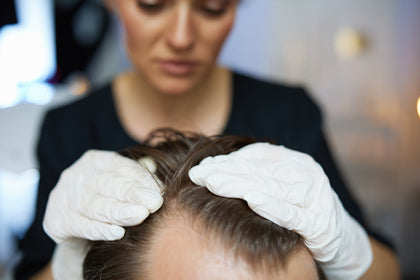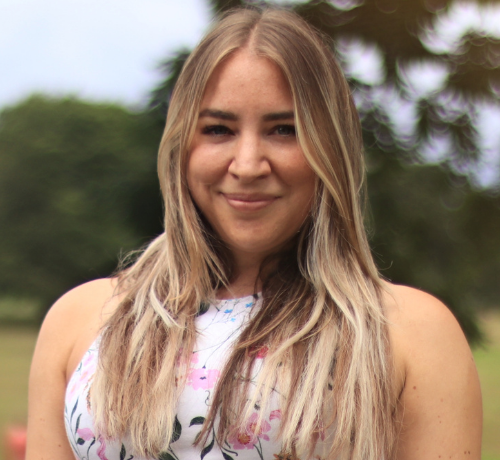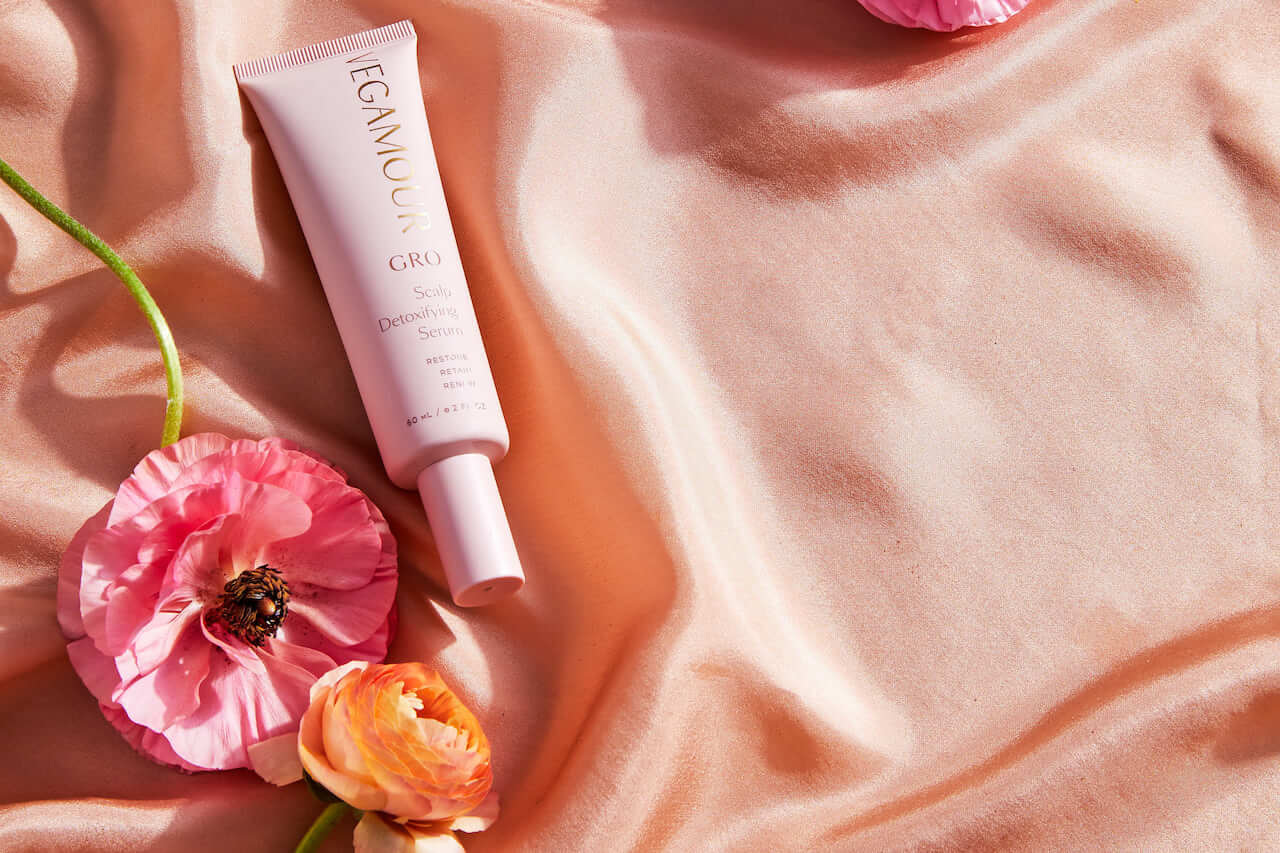Have you noticed more hair falling through your fingers as you scrub in the shower? Maybe your hair strands have been looking a little more sparse than usual. Bald spots, hair thinning and overall hair loss can plague both men and women at different points in their life.
To address hair loss issues, you might try an over-the-counter treatment or two, but if that doesn't work, board-certified dermatologists might be able to assist. But what can a dermatologist actually do? VEGAMOUR spoke to the experts to discover how a dermatologist can help, plus find out what products you should use to combat hair thinning and loss without side effects.
How Do Dermatologists Approach Hair Loss?
Effective hair loss treatment begins with finding the root cause. Hair loss occurs for several reasons, and whether it happens suddenly or over time, an expert can help.
Anna H. Chacon, M.D., a board-certified dermatologist and author explained, "A dermatologist ... can assess various conditions involving hair, skin, and nails and can address those conditions that may require additional work-up, like the scarring forms of hair loss (alopecia), central centrifugal cicatricial alopecia (CCCA) or discoid lupus — both of which can initially present as shedding/thinning."
To find out what's triggering hair thinning and the type of hair loss you might be living with, dermatologists gather information. Your dermatologist might do the following:
- Ask specific questions. He or she will likely ask about your symptoms and compare them against various hair disorders. The doctor probably also will ask how long you've been experiencing the hair loss and whether it was a gradual process or came on quickly.
- Perform a physical exam. Before treatment options are considered, a dermatologist will look at your hair, scalp and nails, plus check for further hair loss across the body. He or she will also look at your overall health.
- Test the integrity of your hair. A hair pull test (gently pulling on the strands) tells a dermatologist more about the thinning hair and whether the hair is prone to breakage.
"A thorough history and physical examination is key to working up alopecia," said Dr. Chacon, who further explained the potential tests a dermatologist might perform.
Pull Test
"A decent amount of hair (40-60 strands) is gently pulled away from the scalp," said Dr. Chacon. "A positive result is when more than 10% of hairs are pulled. However, a negative test isn't fully conclusive in isolation from the clinical history/physical."
See: What to Expect From a Hair Pull Test at the Dermatologist's Office
Tug Test
"A section of hair is held at the root and tip, then tugged to see if any strands break in the middle," Dr. Chacon explained. "This test gives information about the brittleness or fragility of the strands."
Blood Work
Dr. Chacon said that blood work also might be performed, including, but not limited to, complete blood count(CBC), serum iron, ferritin, thyroid-stimulating hormone (TSH), and testosterone.
Read: Trichologist vs. Dermatologist: Which Should You See?
Scalp Biopsy
Finally, the dermatologist might decide its necessary to take a scalp biopsy. Chacon explained it as: "A procedure that removes the skin and its associated components for testing and analysis by dermatopathologist in a lab," she said.
Common Causes of Hair Loss
There are various types of hair loss. According to the American Academy of Dermatology, women experience hair loss for many reasons, but the most common is female pattern hair loss. Also known as androgenetic alopecia, this condition is prevalent for both men and women. In men, the condition is referred to as male pattern baldness. Male pattern hair loss can often lead to complete baldness, but in women, this is rare. Female pattern hair loss often presents as thinning overall and less so at the temples.
Female pattern hair loss aside, there are many other causes of hair loss. In-office procedures such as blood tests could indicate an iron deficiency or vitamin deficiencies, which can trigger hair loss. Your physician might also check hormone levels to ensure an autoimmune disease isn't present, which can affect hair follicles. Hair loss in women often happens postpartum and during menopause, and losing hair can even be a symptom of stress.
Although female hair loss is common, if you're concerned or exhibiting other signs, always check in with a health care professional for further investigation.
Related: Can Anemia or Iron Deficiency Cause Hair Loss?
Dermatologist Treatments for Hair Loss
For genetic hair loss such as androgenic alopecia, a dermatologist might recommend the following treatments.
Topical Minoxidil
This potent formula widens the blood vessels to create a more expansive blood flow. Researchers believe this encourages more blood to the hair follicles, increasing circulation and stimulating hair growth. Unfortunately, though effective, minoxidil has potential side effects and can cause skin reactions such as flaking, redness, itchiness and burning. Ironically, it's also been linked to a temporary type of hair loss called telogen effluvium and even extra facial hair, though the percentage of people affected is low.
Platelet-Rich Plasma Therapy
This type of treatment for hair loss uses the patient's blood to help stimulate cells and encourage hair regrowth. After the blood is drawn, it's placed into a machine that separates it into different components. The platelets, a type of blood cell, are then treated and injected into the scalp to stimulate the cells and increase hair growth. The research is relatively sparse but promising, and many have experienced positive results.
Prescription Medication
As discussed, there are different types of hair loss, and they might require different prescriptions. Oral finasteride is an option for men with male pattern hair loss as it slows the rate of hair loss and stimulates hair growth. Antiandrogens include oral contraceptives and spironolactone that contain estrogen, and long-term treatment is necessary to prevent someone from losing hair. Corticosteroid medications are used when someone is suffering from an autoimmune disease. An antifungal medication might be prescribed if scalp ringworm is present.
Laser Treatment
Depending on the type of hair loss, low-level light therapy might stimulate hair follicles and, in turn, new growth. It often requires several sessions and can take up to a year. In one study of 41 patients over 16 weeks, a 39% increase in hair growth was seen with the use of low-level laser therapy.
Holistic Hair Loss Tips
A dermatologist might prescribe medication or intense therapy to encourage hair growth, but in some instances, a more natural approach can prove effective.
Try Scalp Massages
Chacon explained, "One holistic tip for dealing with hair loss is incorporating scalp massages into one's daily routine. Scalp massages support hair health and prevent hair loss by promoting blood vessel vasodilation to allow more blood/nutrients/oxygen to the hair follicle. Massages can also aid in stress relief, which can help prevent hair follicles from prematurely going into the resting state, inadvertently making them weaker, which leads to increased susceptibility to breakage [and hair] falling out prematurely."
See: GRO Revitalizing Scalp Massager
Changing Hair Styles
If you constantly pull your hair back in a slick or very tight ponytail, you might damage the strands and negatively impact the health of your follicles, which can lead to hair loss. This is what's known as traction alopecia, which is caused by the inflammation of hair follicles.
Wash With Care
If you're struggling with hair loss, avoid chemical-laden shampoos and conditioners. Sulfate might create a foamy lather but can dry out brittle strands over time. Instead, a gentle, all-natural shampoo and conditioner containing powerful phyto-actives will protect frail strands and fortify follicles without chemicals.
Eat Well
A well-balanced diet will ensure your skin, hair and nails stay healthy and in the best condition. Stock up on berries, which can contain powerful antioxidants, and leafy greens to get extra iron, vitamins and minerals into your system.
Read: The 5 Nutrients Your Hair Needs
Turn Down the Heat
Use the lowest settings on your blow dryers, straightening irons and tongs to avoid damaging strands further. If you can't forgo the heat altogether, just use it on special occasions.
A Holistic Approach Is the Key to Hair Health
If you're worried about hair loss, checking in with a dermatologist might help you understand the problem better. Some medical hair loss conditions might require prescription treatment or be irreversible, but hair loss is temporary for many.
To amp up your hair's overall wellness, take a holistic approach. Consider your diet and stress levels, get enough sleep, stay hydrated and use natural hair wellness products that are easy to work into your existing daily routine. You and your hair will be better for your efforts!
More From VEGAMOUR
- Shop: Shampoos to Combat Thinning Hair
- Avoid These Things If You Have Thinning Hair
- Why Am I Losing So Much Hair?
Photo credit: CentralITAlliance/iStock



















